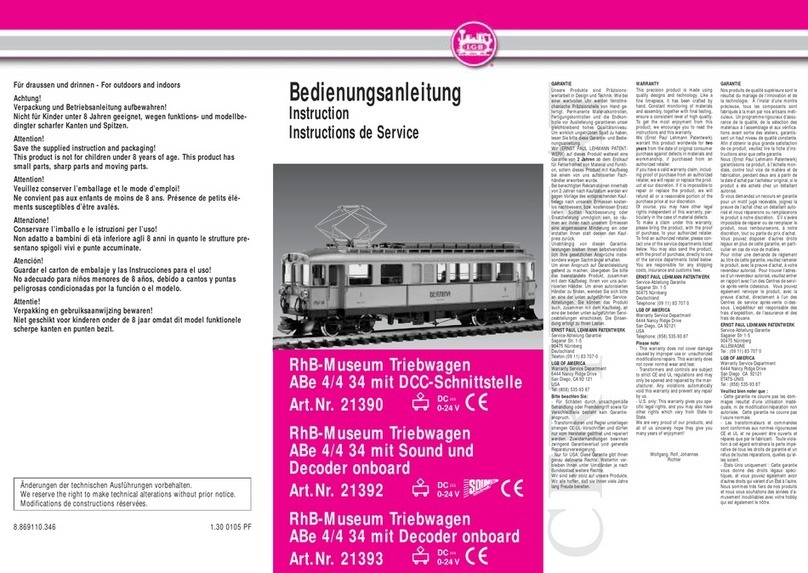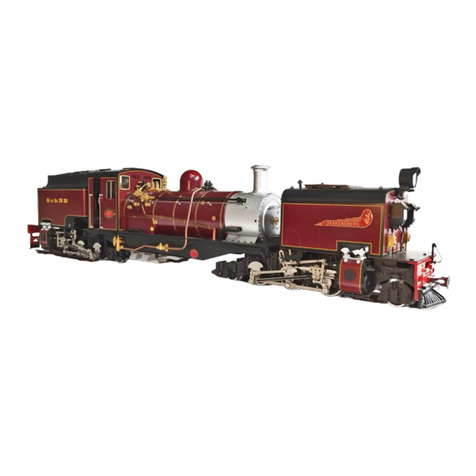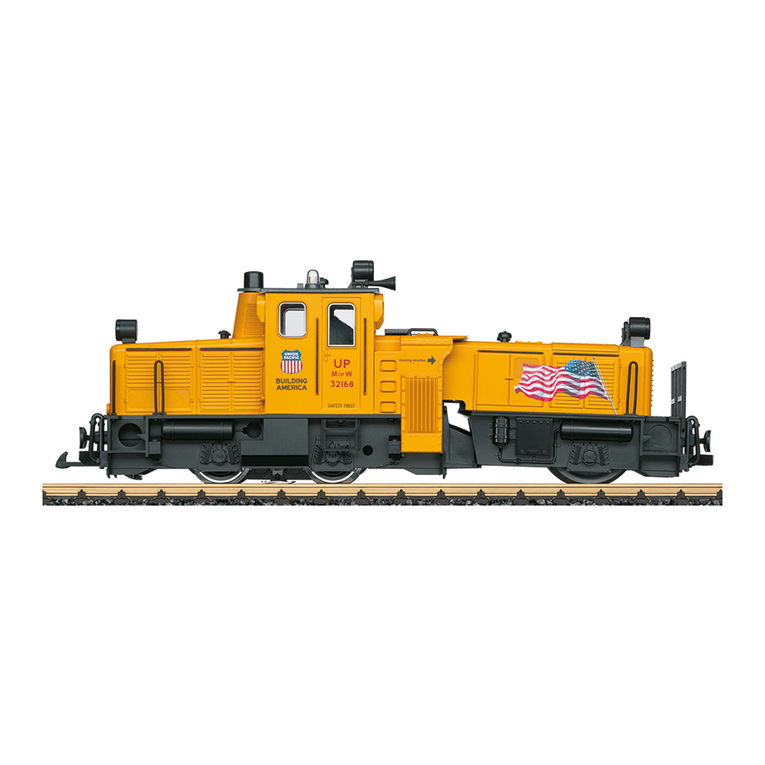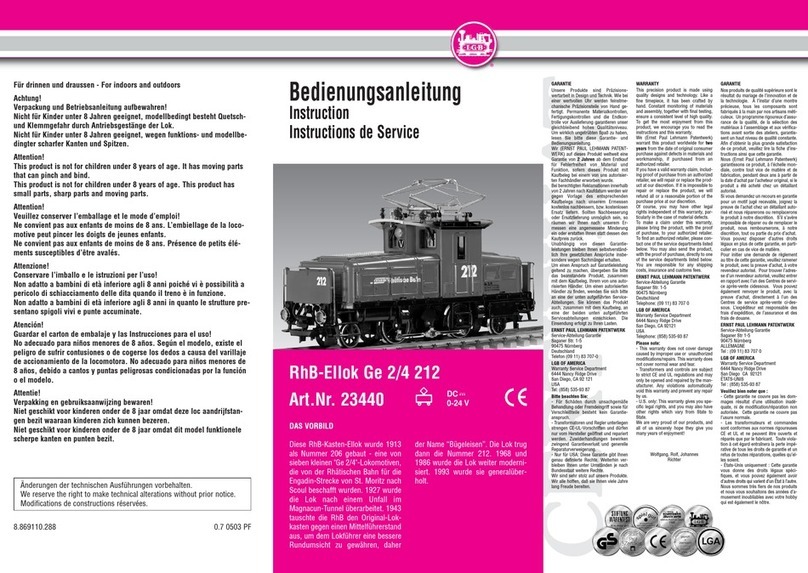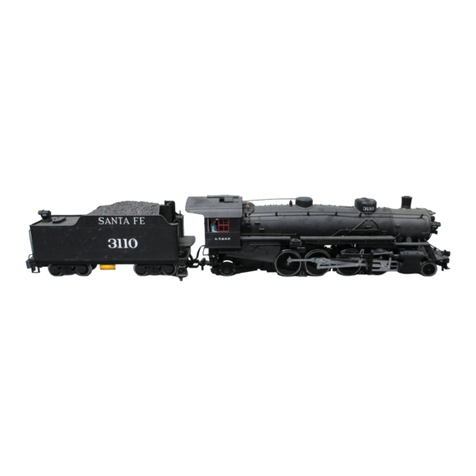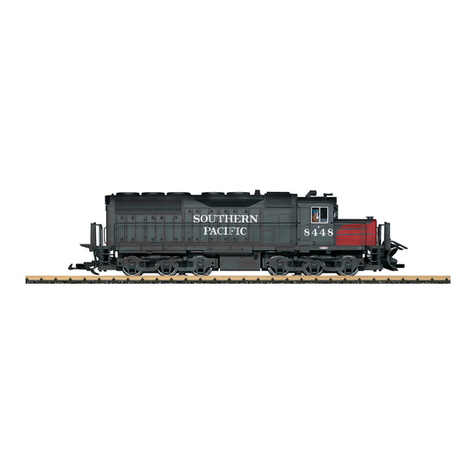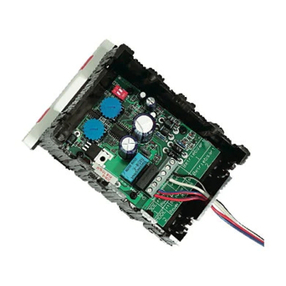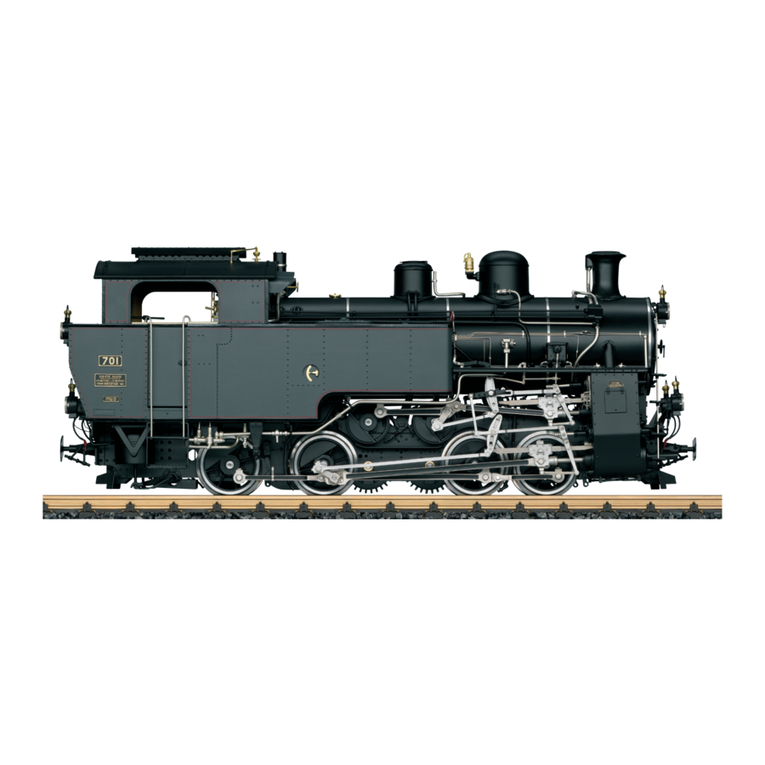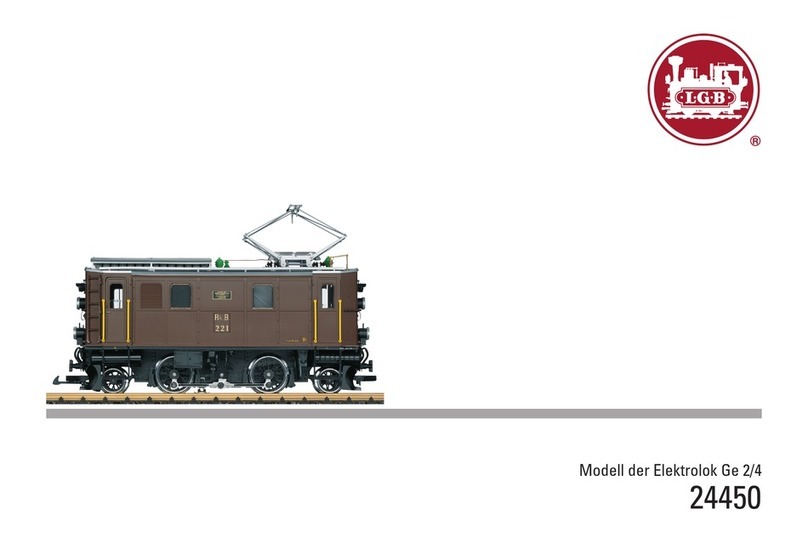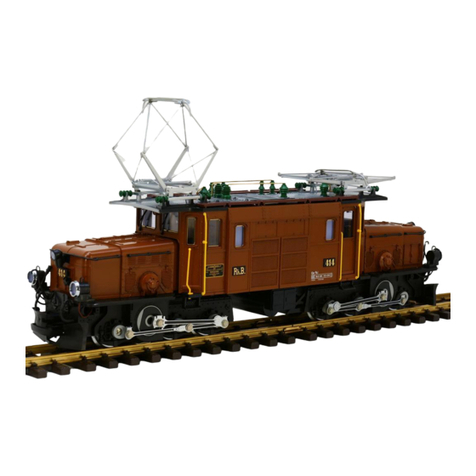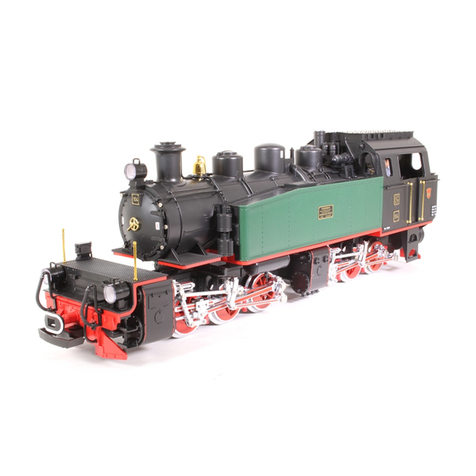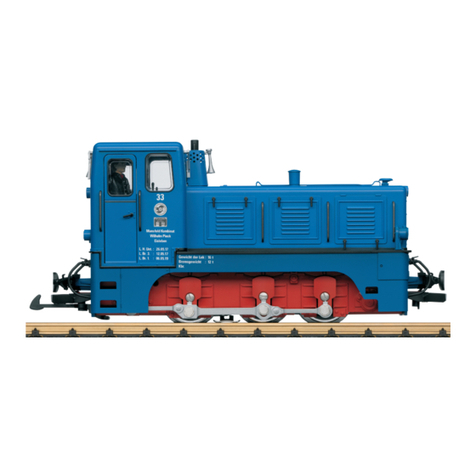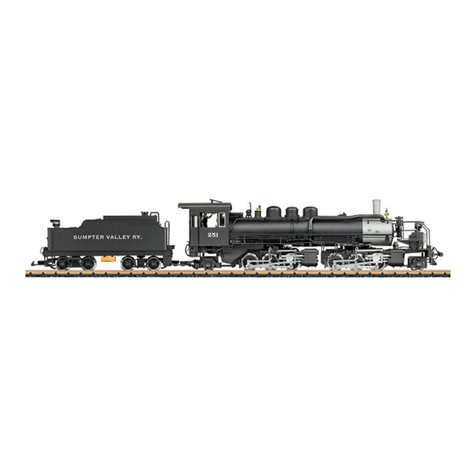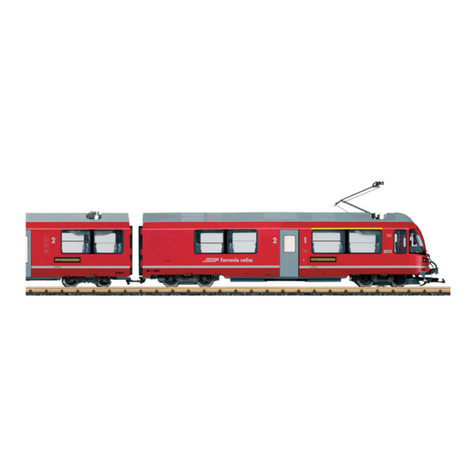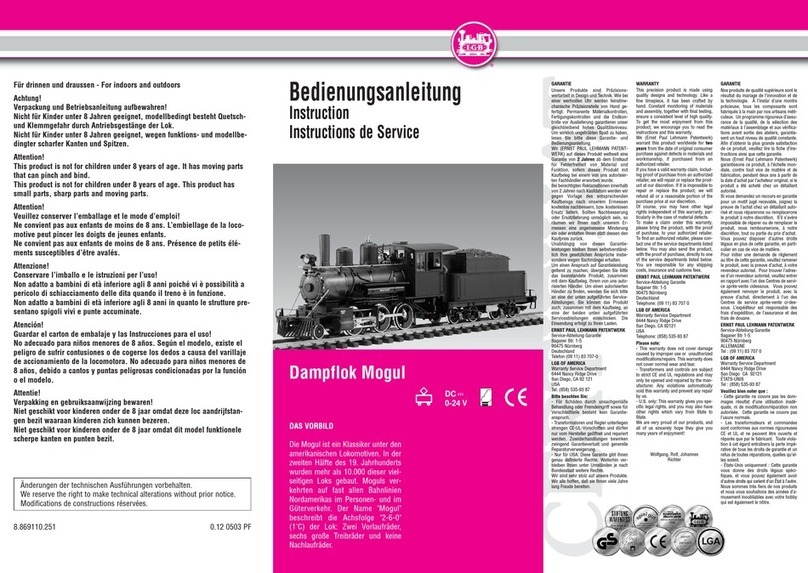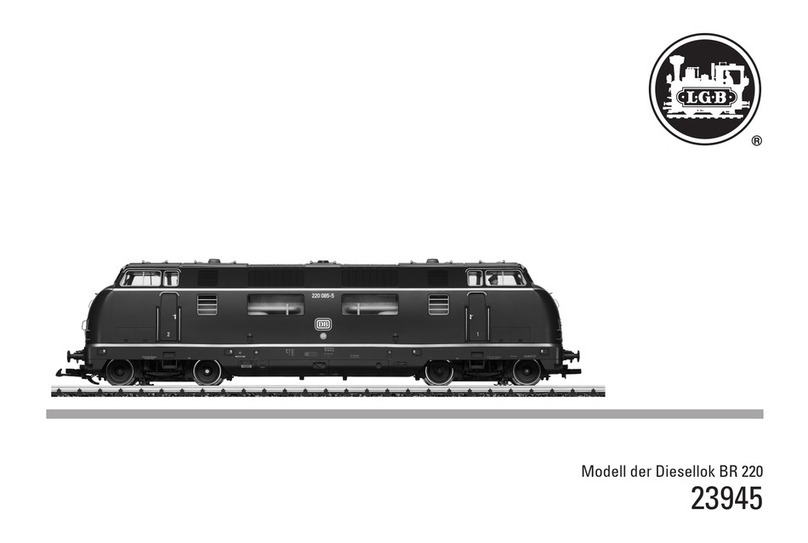
Buchse (d) der Talstation und versorgen Sie den Trafo über eine Steckdose mit Strom
(Abb. 4).
4. Einstellen der Fahrzeit (Regler b):
Jetzt bewegen sich die Gondeln.Lassen Sie die Gondeln gegen die Bergstation laufen,
ohne die Einstellung zu verändern.Warten Sie eine weitere Fahrt ab. Nach der zweiten
Fahrt beginnen Sie mit der Einstellung der Fahrzeit:
Achtung! Drehen Sie die Regler nur, wenn sich das Antriebsrad nicht dreht, da die
Einstellungen erst nach Beendigung eines Intervalls übernommen werden.
- Falls die Gondeln gegen die Bergstation stoßen, drehen Sie den Regler b ein wenig
gegen den Uhrzeigersinn, um die Fahrzeit zu verkürzen.
- Falls die Gondeln die Stationen nicht erreichen, drehen Sie den Regler b ein wenig
im Uhrzeigersinn, um die Fahrzeit zu verlängern.
- Die Einstellung der Fahrzeit erfolgt schrittweise: Nach jeder Fahrt wird die Fahrzeit
verlängert oder verkürzt, bis das gewünschte Fahrverhalten erreicht ist.
Hinweis: Die Regler sind sehr feinfühlig.Winzige Veränderungen am Regler sind nötig,
um die Seilbahn richtig einzustellen. Die Fahrzeit kann zwischen 3 und 50 Sekunden
gewählt werden.
5. Einstellen der Haltedauer (Intervallzeit):
Um die Haltedauer zu verkürzen, drehen Sie Regler a gegen den Uhrzeigersinn (und
umgekehrt). Gehen Sie dabei schrittweise vor, indem Sie nach jeder Fahrt kleine
Veränderungen am Regler vornehmen, bis die Haltedauer wie gewünscht eingestellt ist.
Hinweis: Intervallzeit = Fahrzeit + Haltezeit.Die Intervallzeit kann zwischen ca.5 und 90
Sekunden eingestellt werden.
Achtung! Drehen Sie die Regler nur, wenn sich das Antriebsrad nicht dreht, da die
Einstellungen erst nach Beendigung eines Intervalls übernommen werden.
Achtung! Wenn die Intervallzeit kürzer als die Fahrzeit eingestellt wird, funktioniert die
Seilbahn nicht richtig.
6. Jetzt sollte Ihre Seilbahn einwandfrei funktionieren. Falls nach wie vor Probleme
auftreten, lesen Sie bitte MÖGLICHE FEHLER UND DEREN LÖSUNGEN.
7. Individuelle Einstellung der Geschwindigkeit
Mit dem Regler a können Sie die Fahrgeschwindigkeit einstellen.
Hinweis: Wenn die Fahrgeschwindigkeit erhöht wird, muß gleichzeitig die Fahrzeit
verringert werden (und umgekehrt). Nachdem Sie die Geschwindigkeit verändert haben,
führen Sie die Schritte 4 und 5 der obigen Anleitung durch, um die Seilbahn neu
einzustellen.
ABBAU UND WIEDERAUFBAU DER ANLAGE
1. Ziehen Sie den Stecker des Trafos erst, nachdem die Anlage zum Stillstand gekommen
ist.
2.Verändern Sie die gewählte Einstellung nicht.
3. Nach dem Wiederaufbau bringen Sie die Gondeln in Mittelstellung und schließen den






